
Faced with an ecological crisis, public health emergencies and socioeconomic inequities, agroecology emerges as a transdisciplinary beacon of hope.

As environments change, so too can disease burdens, and access to sustainable sources of food, energy, and shelter. The state of the built environment is a powerful indicator of public health—in a given community and worldwide—and U-M researchers are examining the interplay between food systems, legacy water and energy infrastructure, poverty and public policy, and human health. The Children's Environmental Health and Disease Prevention Center, the Healthy Environments Partnership, Poverty Solutions, and other initiatives focus on ensuring that new approaches toward the built environment contribute to more equitable, just, and sustainable public health.

Faced with an ecological crisis, public health emergencies and socioeconomic inequities, agroecology emerges as a transdisciplinary beacon of hope.

Southeast Michigan’s Huron River abounds with picturesque natural scenes, including burbling streams, graceful trumpeter swans, towering leafy trees, and… polluted foam? More than just an eyesore, this foam—now a common sight in waterways across Michigan and much of the U.S.—often contains a group of harmful synthetic chemicals called perfluoroalkyl and polyfluoroalkyl substances, or PFAS, which have been linked to a variety of negative health effects.

Traffic pollution emerges as a lead exacerbator for ailments that come with aging.

Air pollution from traffic emerges as a key risk factor for older adults losing their ability to care for themselves without some or total assistance. Traffic-related air pollution releases fine particulate matter and gasses like nitrogen dioxide into the air that can harm the lungs, heart, brain, and other parts of the body.

A grant from the National Oceanic and Atmospheric Administration’s Integrated Ocean Observing System will establish a Great Lakes Biodiversity Observation Network to coordinate with and learn from biodiversity observation networks along the U.S. coasts and ocean waters and other BONs in ocean and freshwater habitats worldwide.

Nestled by the St. Clair River, a small rural neighborhood in St. Clair Township, Michigan, is surrounded by a high concentration of hazardous crude oil and natural gas facilities. For decades, Murphy Drive residents have been exposed to unreported chemical releases, oil spills, poor air quality and harmful odors.

Researchers at U-M’s Rogel Cancer Center want to build a movement to understand how exposures to toxic metals, industrial pollution and “forever chemicals” called PFAS, are impacting the health and cancer risk of residents across Michigan.

Pollen allergies affect nearly one third of the global population, and climate change is set to make it worse. Rackham student Yingxiao Zhang is developing a better way to forecast allergy season to help people better navigate its headaches.

Melinda Su-En Lee, PharmD’21, co-founded Parcel Health in 2019, while studying at the University of Michigan College of Pharmacy. The company aims to solve the waste problem caused by traditional plastic prescription bottles.
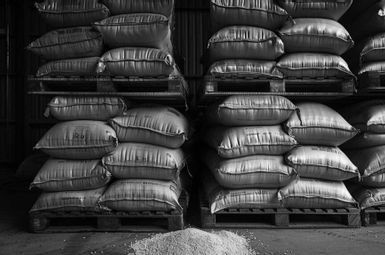
Rice exported to Haiti—mostly from the United States—contains unhealthy levels of arsenic and cadmium, which can increase the risk of various cancers, heart disease, diabetes and other illnesses, new research shows.

Middle-aged women with elevated levels of heavy metals are more likely to have depleted ovarian function and egg reserves, which may lead to earlier arrival of menopause and its negative health effects, a new U-M study shows.

The Environmental Health Research-to-Action Academy is a community-academic partnership focused on building skills and intergenerational knowledge in environmental health, community science and policy advocacy to address cumulative environmental exposures in the nearby communities.

While Legionella bacteria can be found in natural freshwater environments, outbreaks of Legionnaires’ disease are more often associated with large water systems in public buildings, cooling towers, and other places where water is stagnant or flows at a low rate.

A U-M Public Health research team will support community leaders from the Southwest Detroit Community Benefits Coalition and the Southwest Detroit Environmental Vision, who are working to develop an app that quantifies truck traffic using data from phones and other electronic devices.

Ann Arbor and other cities across the Midwest and Northeast have been referred to by climate specialists as “climate havens,” natural areas of refuge that are relatively safe from extreme weather events such as intense heat and tropical storms.

"In many parts of the world, the air pollution monitoring network is inadequate, so people just don't know how bad pollution is in their neighborhoods. And even when they have a monitor nearby, households might not be aware of the full range of health damages that they could be experiencing. So people don't always take adequate measures to protect themselves."

Each peer-reviewed factsheet presents data on patterns of use, life cycle impacts, and sustainable solutions. Updated annually by a current SEAS graduate student, the collection is a free resource to inform journalists, policymakers, business professionals, students, teachers and the public.

PFAS have contaminated water, food, and people through products such as Teflon pans, waterproof clothing, stain-resistant carpets and fabrics, and food packaging. They are often referred to as “forever chemicals” because they are resistant to breaking down and therefore last for decades in the environment.

“Water conservation and access” brings a slew of images to mind: wastewater flowing through main lines to a city treatment plant, a fisherman yanking invasive mussels off the hull of a trawler, the installation of filters in communities that lack access to safely managed drinking water.

No amount of air pollution is good for the brain, but wildfires and the emissions resulting from agriculture and farming in particular may pose especially toxic threats to cognitive health, according to new research from U-M. Increasingly, evidence shows exposure to air pollution makes the brain susceptible to dementia.

Air pollution is known to cause a host of negative effects on human health, with urban populations at particular risk. The National Institute of Environmental Health Sciences (NIEHS) estimates that 9 out of 10 urban area residents are impacted by air pollution.

In Detroit in 2019, there were four times as many hospitalizations for asthma than the state of Michigan as a whole, and Detroit ranks among the 20 most challenging cities for people with asthma to live.

A new study estimates that the overall benefits to society of switching ride-hailing vehicles from gasoline to electric would be very modest—on average, a 3% gain per trip when other “costs on society” are factored in.

Polyvinyl chloride (PVC) is practically everywhere. Inexpensive to produce and highly versatile, it has been employed in a host of everyday goods. Its utility, unfortunately, is matched by its toxicity.

In 1973, toxic flame retardant was mistakenly sent to Michigan farmers as livestock feed, causing an environmental health crisis. To this day, researchers continue to investigate the health effects of the contamination, and community members are active in advocating for clean-up efforts.

Scientific studies have shown that exposure to some PFAS in the environment may be linked to harmful health effects in humans and animals. Because there are thousands of PFAS chemicals found in many different consumer, commercial, and industrial products, it is challenging to study and assess the human health and environmental risks.
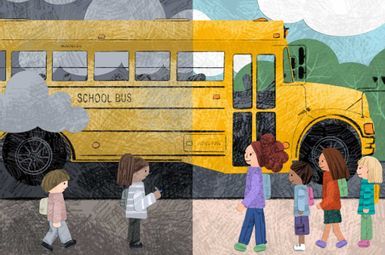
Replacing all of the oldest school buses in the nation could lead to 1.3 million fewer daily absences annually, according to a U-M study. The suspected cause of these preventable absences is exposure to high levels of diesel exhaust fumes, which can leak into school bus cabins or enter buses through open windows. Over time, exposure can exacerbate respiratory illnesses and other conditions and lead to missed school days.

“By having access to this information, people can make informed decisions about their behavior if they have a personal concern about the levels of pathogens detected in their community.”

The risk of death rises among older adults with Alzheimer’s or other dementias in the months following exposure to a hurricane, a new U-M study shows. Their increased risk could be due to disruption of normal routine, such as access to caregiving, changes in living environment, loss in access to medications, and change in daily routines, said study first author Sue Anne Bell, assistant professor at the U-M School of Nursing.

As climate change and population growth make water scarcity increasingly common, a much larger share of the global population will be forced to reckon with the costs of urban water scarcity. A new study sheds light on how households bear the monetary and nonmonetary costs when water supply is intermittent, rather than continuous—with policy implications that could help make urban water safer, more sustainable and more equitable.

The world’s building stock is expected to double by 2060, adding the equivalent of one New York City in new construction every month. Yet construction methods and materials that dominate the building sector are carbon-intensive, unhealthy for people, destructive to the environment, and are becoming increasingly expensive, with much of the burden falling on vulnerable populations.

Classmates Cecilia Garibay and Dolores Migdalia Perales teamed up to develop the Michigan Sustainability Case, “A Tale of Two (Polluted) Cities: Latinx communities and their allies face air pollution in Southwest Detroit and Southwest Los Angeles.”
New information about an emerging technique that could track microplastics from space has been uncovered by U-M researchers. It turns out that satellites are best at spotting soapy or oily residue, and microplastics appear to tag along with that residue.

A U-M startup that helped accelerate the removal of dangerous lead pipes in Flint and many other communities has joined a White House partnership aimed at replacing all of the nation’s lead service lines in a decade. The public-private initiative aims to expedite the removal of lead in drinking water — a problem that rose to national prominence when lead was discovered in Flint’s drinking water several years ago and spurred a public health crisis.

The Transformative Food Systems (TFS) Fellowship was created to attract student leaders who reflect the communities that are most affected by the interrelated environmental, health and economic food systems crises. The two-year program provides selected fellows with the learning and training needed to enable them to transform food systems to be equitable, healthy, and ecologically sound.

When an emergency causes a disruption in access to clean water, it seems reasonable to respond by providing the public with bottled water. In the short term, this can provide a safe supply of water while the problems get sorted out. But what if the emergency has lasted eight years, and counting, as it has in Flint, Michigan?

A $2.2 million, four-year grant from the CDC will fund a study examining the effects of illegal dumping interventions on the prevention of violent crime in Flint, Michigan. U-M School of Public Health researchers are partnering with Genesee County Land Bank and the Center for Community Progress to conduct the research on county-owned vacant lots to develop sustainable approaches to curb illegal dumping and community violence.

Obesity has been a major global health issue in recent decades as more people eat unhealthy diets and fail to exercise regularly. A new U-M notes that women in their late 40s and early 50s exposed long-term to air pollution—specifically, higher levels of fine particles, nitrogen dioxide and ozone—saw increases in their body size and composition measures.

Projects will pursue a range of carbon neutrality pathways, including carbon capture, renewable fuels, energy storage, aircraft electrification, solar power, chemical production, and circular economies.

An online, mobile-friendly training module teaches salon owners and employees how to mitigate exposure to chemicals and volatile organic compounds that are ubiquitous in nail salon products like polishes, removers, artificial nails, adhesives, glues and hardeners.

As a board member of the nonprofit Cass Community Social Services organization in Detroit, SEAS master’s student Isabella Shehab has seen firsthand the challenges the city and its residents face: vacant buildings, aging infrastructure, flooding. Now, Shehab is using a scholarship awarded through the Landscape Architecture Foundation (LAF) to research the impacts these challenges have on Detroit residents’ mental health and well-being—all with an eye on solutions.
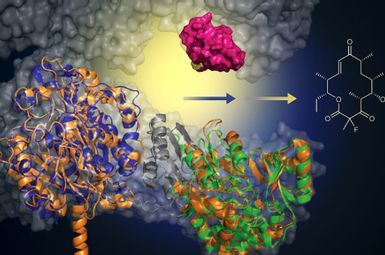
An international team of researchers has developed a method for altering one class of antibiotics, using microscopic organisms that produce these compounds naturally. While chemists have developed methods for adding the fluorine synthetically, the process is arduous and requires the use of toxic chemical reagents. The new biosynthetic method developed by the researchers from Goethe University and U-M overcomes those challenges.

U-M will work with Michigan State University, Wayne State University, and regional and state stakeholders to craft policies that will ensure safe drinking water at low cost. Labeled the Michigan Center for Freshwater Innovation (MFIC), the partnership will work with the state’s Department of Environment, Great Lakes and Energy (EGLE) to fulfill the promise of directives issued late last year by Gov. Gretchen Whitmer on safe drinking water.
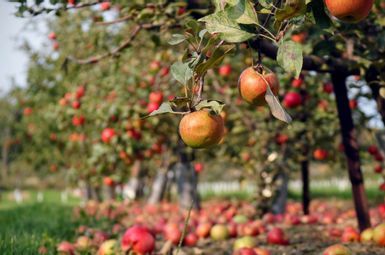
The Michigan Farmworker Project (MFP) is a community-based participatory research initiative aimed at improving the social and environmental health of Michigan’s farmworker population, who play a critical role in the state’s food supply chain. In May 2020, the researchers shared first-of-its-kind findings that provided evidence-based approaches to better protecting Michigan’s farmworkers from COVID-19 while providing essential work during the pandemic.
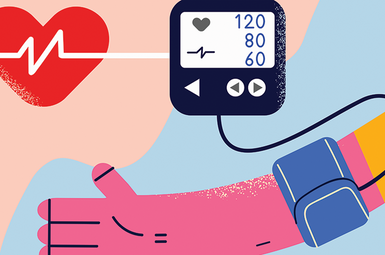
Middle-aged women with higher blood concentrations of a common group of synthetic chemicals known as PFAS are at greater risk of developing high blood pressure, compared to their peers who have lower levels of these substances. Called "forever chemicals," PFAS are used in everyday household items such as shampoo, dental floss, cosmetics, nonstick cookware, food packaging, stain-resistant coatings for carpeting, upholstery and clothing.